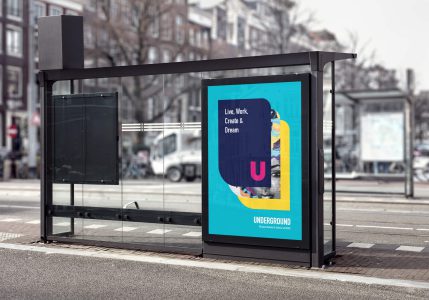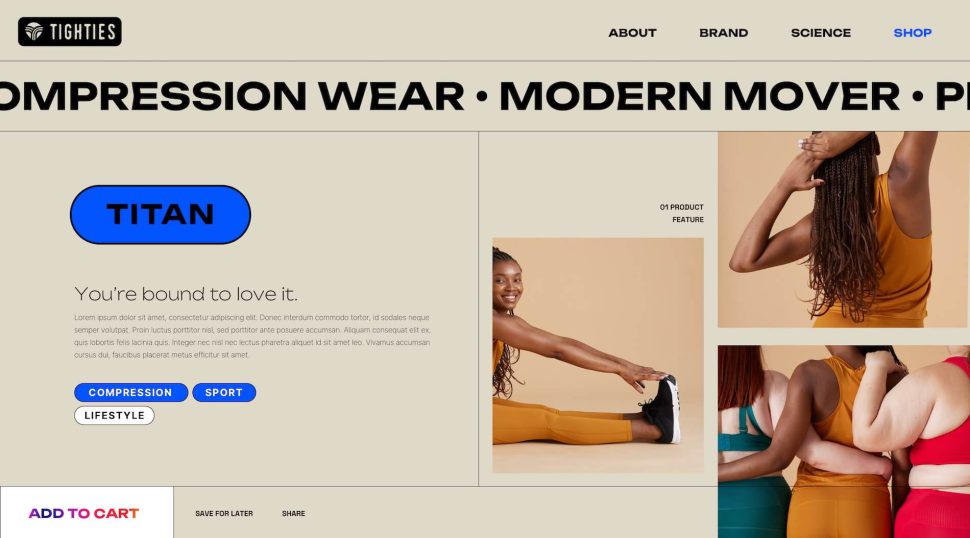
Advertising plays a pivotal role in shaping and elevating a brand’s identity. With consumers constantly bombarded by countless images and messages, it is vital for companies to utilize effective advertising strategies to stand out from the crowd. This article explores the impact of advertising in graphic design and how it can help businesses level up their brand.
Advertising not only helps create brand awareness but also influences consumer perception and behavior. By using compelling visuals, typography, and messaging, graphic design can effectively communicate a brand’s unique value proposition, personality, and story. Whether it’s through print media, digital platforms, or social media, advertising in graphic design provides a platform to convey a brand’s message in a visually captivating way.
Furthermore, advertising in graphic design allows businesses to establish a strong connection with their target audience. By understanding their needs, desires, and preferences, brands can create impactful advertisements that resonate with consumers on an emotional level. This, in turn, enhances brand loyalty and drives customer engagement.
In this article, we will delve into the various aspects of advertising in graphic design and how it can help businesses level up their brand presence in today’s competitive market. So, buckle up and get ready to take your brand to new heights through the power of impactful graphic design advertising.
The importance of branding in graphic design
Branding is an essential aspect of graphic design as it helps businesses establish a unique and recognizable identity. Through branding, companies can differentiate themselves from their competitors and leave a lasting impression on their target audience. Advertising serves as a powerful tool in building and reinforcing a brand’s image. By using consistent visual elements such as logos, color schemes, and typography in advertisements, businesses can create a cohesive brand identity that resonates with consumers.
When it comes to branding in graphic design, consistency is key. Consistent branding not only helps build brand recognition but also fosters trust and loyalty among consumers. Effective advertising strategies ensure that a brand’s message is conveyed consistently across different platforms and mediums, reinforcing the brand’s image in the minds of consumers.
Understanding the role of advertising in graphic design
Advertising in graphic design goes beyond simply promoting a product or service. It involves carefully crafting visuals, typography, and messaging to create a compelling narrative that captures the attention of the target audience. The goal is to communicate the brand’s unique value proposition, personality, and story in a visually captivating way.
Advertising in graphic design provides businesses with a platform to showcase their products or services in a creative and engaging manner. It allows them to highlight the benefits and features that set them apart from their competitors. By carefully considering the target audience and their preferences, businesses can tailor their advertising strategies to effectively reach and connect with their potential customers.
The impact of advertising on brand recognition
One of the primary benefits of advertising in graphic design is its ability to enhance brand recognition. Through consistent use of visual elements such as logos, color schemes, and typography, businesses can create a visual identity that is easily recognizable by consumers. When consumers repeatedly encounter these visual elements in advertisements, they develop a sense of familiarity and association with the brand.
Brand recognition is crucial in today’s competitive market. It helps businesses stand out from the crowd and makes it easier for consumers to remember and recall their brand when making purchasing decisions. Effective advertising in graphic design ensures that a brand’s visual identity is consistently and prominently displayed, reinforcing brand recognition and creating a lasting impression in the minds of consumers.
How advertising affects consumer perception
Advertising in graphic design has a direct impact on consumer perception. The way a brand presents itself through advertisements influences how consumers perceive its products or services. By using compelling visuals, typography, and messaging, businesses can shape consumer perceptions and create a positive brand image.
When designing advertisements, businesses must consider their target audience’s needs, desires, and preferences. By understanding what motivates their customers, brands can create advertisements that resonate with consumers on an emotional level. This emotional connection helps build trust and loyalty, as consumers feel understood and valued by the brand.
Furthermore, advertising in graphic design allows businesses to highlight their unique selling points and convey their brand’s personality. Whether it’s through humor, inspiration, or storytelling, effective advertising can evoke specific emotions and associations that align with the brand’s values and positioning. This, in turn, influences consumer perception and creates a positive brand image.
You might like
Strategies for incorporating advertising into graphic design
When incorporating advertising into graphic design, businesses must consider several strategies to maximize the impact of their advertisements. One such strategy is to ensure that the advertisements are visually captivating and attention-grabbing. By using bold colors, striking visuals, and creative layouts, businesses can capture the attention of their target audience and compel them to engage with the advertisement.
Another strategy is to leverage the power of storytelling in advertising design. By telling a compelling story that resonates with the target audience, businesses can create an emotional connection and leave a lasting impression. Storytelling adds depth and meaning to advertisements, making them more memorable and impactful.
In addition, businesses should consider the role of typography and color in advertising design. Typography plays a crucial role in conveying the brand’s personality and message. Choosing the right fonts and typography styles can help create a visual hierarchy and guide the viewer’s attention. Similarly, color psychology plays a significant role in advertising, as different colors evoke different emotions and associations. By strategically using colors that align with the brand’s message and target audience, businesses can enhance the impact of their advertisements.
The role of typography and color in advertising design
Typography and color are two key elements in advertising design that can significantly impact a brand’s message and perception. When used strategically, typography can evoke certain emotions and convey the brand’s personality. Different fonts have different characteristics, and choosing the right one is crucial in effectively communicating the brand’s message.
Furthermore, color has a profound psychological impact on consumers. It can evoke specific emotions and associations, creating a strong visual connection between the brand and its target audience. For example, bold and vibrant colors often convey energy and excitement, while softer and muted tones can evoke a sense of calm and tranquility. By carefully selecting typography and color, graphic designers can create advertisements that captivate attention and leave a lasting impression on consumers.
In successful advertising campaigns, typography and color are often used in harmony to create a cohesive visual identity. Brands like Coca-Cola and Nike have mastered the art of using typography and color to create instantly recognizable and iconic advertisements. These brands understand the power of consistent visual branding and how it contributes to building a strong brand identity and recall.
Brands like Coca-Cola and Nike have mastered the art of using typography and color to create instantly recognizable and iconic advertisements.
Examples of successful advertising campaigns in graphic design
To truly understand the impact of advertising in graphic design, it is essential to examine some successful campaigns that have effectively utilized the power of visuals to convey their brand message.
One such example is the “Got Milk?” campaign. This campaign, launched in the 1990s by the California Milk Processor Board, featured simple yet powerful visuals of celebrities with milk mustaches. The campaign aimed to create a sense of desirability and aspiration around milk consumption. The combination of the iconic “Got Milk?” tagline, the recognizable milk mustache, and the use of famous personalities created a memorable and effective advertising campaign.
Another notable example is Apple’s “Think Different” campaign. This campaign, launched in the late 1990s, featured black-and-white portraits of influential individuals such as Albert Einstein, Mahatma Gandhi, and Martin Luther King Jr. The typography and visuals were minimalistic yet impactful, conveying the message that Apple was a brand that celebrated innovation, creativity, and individuality. This campaign not only positioned Apple as a leader in the technology industry but also resonated with consumers on a deeper emotional level.
These examples highlight the power of advertising in graphic design to create a strong brand narrative and connect with consumers in a meaningful way. By understanding the target audience and crafting visually compelling advertisements, brands can leave a lasting impact and differentiate themselves from competitors.
The use of storytelling in advertising design
Storytelling is a powerful tool in advertising design that can evoke emotions, engage consumers, and leave a lasting impression. By weaving a narrative into advertisements, brands can create a deeper connection with their target audience and effectively communicate their brand values and offerings.
One brand that has successfully utilized storytelling in their advertising is Airbnb. Their “Belong Anywhere” campaign focused on sharing the stories of real Airbnb hosts and the unique experiences they offer to travelers. Through visually captivating advertisements, Airbnb showcased the diversity of accommodations and the personal connections that can be made while staying with their hosts. This campaign not only highlighted the brand’s core values of inclusivity and belonging but also inspired consumers to consider Airbnb as a trusted and authentic travel option.
Storytelling in advertising design allows brands to tap into the emotional aspect of consumer decision-making. By creating narratives that evoke emotions such as joy, nostalgia, or empathy, brands can establish a deeper connection with their audience and drive brand loyalty. Effective storytelling in advertising design goes beyond promoting products or services; it creates an experience and fosters an emotional bond between the brand and the consumer.
Additional Reads
Measuring the effectiveness of advertising in graphic design
As with any marketing strategy, measuring the effectiveness of advertising in graphic design is crucial to determine the return on investment and make informed decisions for future campaigns. While measuring the impact of design elements can be subjective, there are several key metrics that can help evaluate the success of advertising in graphic design.
One important metric is brand awareness. By tracking the reach and impressions of advertising campaigns, brands can assess the level of exposure and visibility they have achieved. Additionally, measuring brand recall and recognition can provide insights into the effectiveness of visual elements such as logos, typography, and color.
Another metric to consider is consumer engagement. This can be measured through metrics such as click-through rates, time spent on a website, or social media interactions. By analyzing consumer engagement, brands can gauge the effectiveness of their advertising in capturing and retaining the attention of their target audience.
Lastly, it is crucial to analyze the impact of advertising on key business objectives, such as sales or lead generation. By tracking conversions and revenue generated from advertising campaigns, brands can assess the direct impact of their graphic design efforts on their bottom line.
Conclusion: Leveraging advertising to elevate your brand
Advertising in graphic design is a powerful tool that can help businesses level up their brand presence in today’s competitive market. By leveraging impactful typography, color, storytelling, and measuring the effectiveness of advertising campaigns, brands can create a strong brand identity, resonate with their target audience, and drive business growth.
In an era where consumers are constantly exposed to advertising messages, it is essential for brands to invest in effective graphic design to stand out from the crowd. By utilizing the principles discussed in this article and continuously refining their advertising strategies, businesses can successfully level up their brand and leave a lasting impression on consumers.
So, buckle up and get ready to take your brand to new heights through the power of impactful graphic design advertising.











